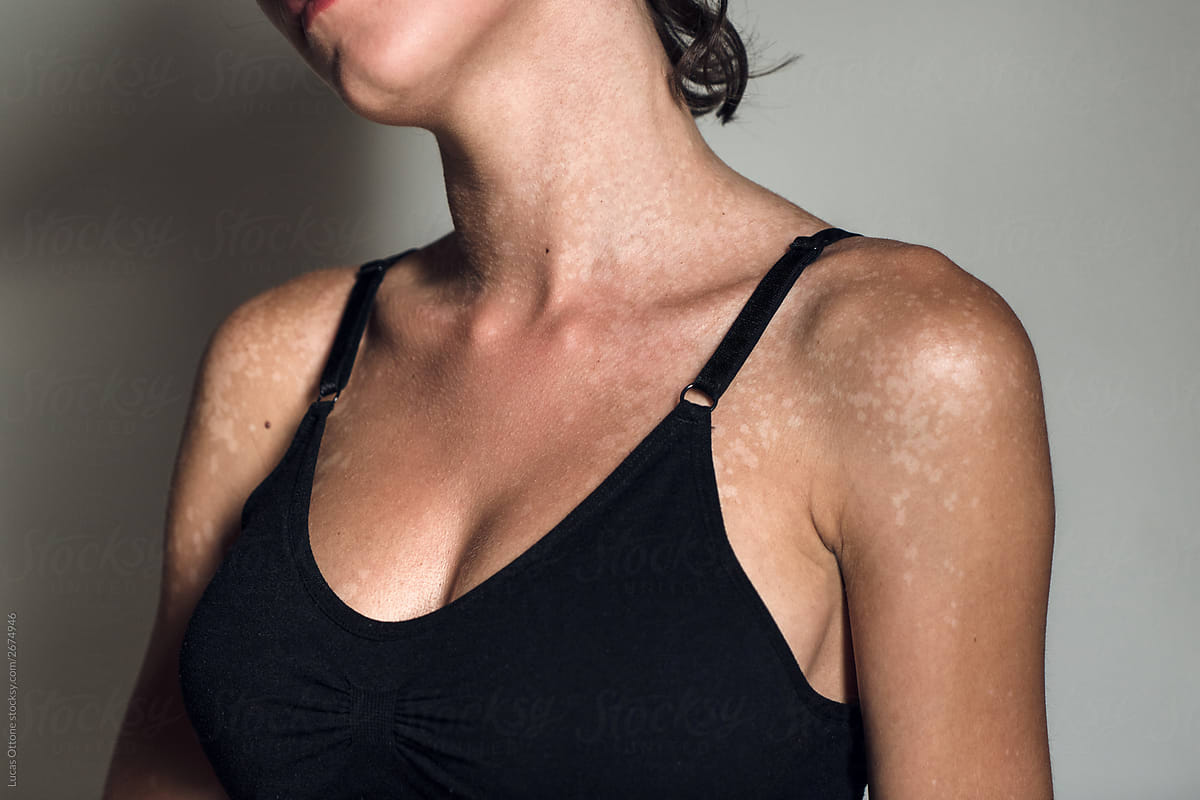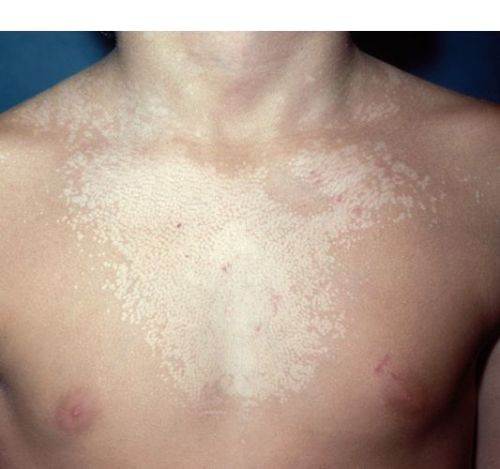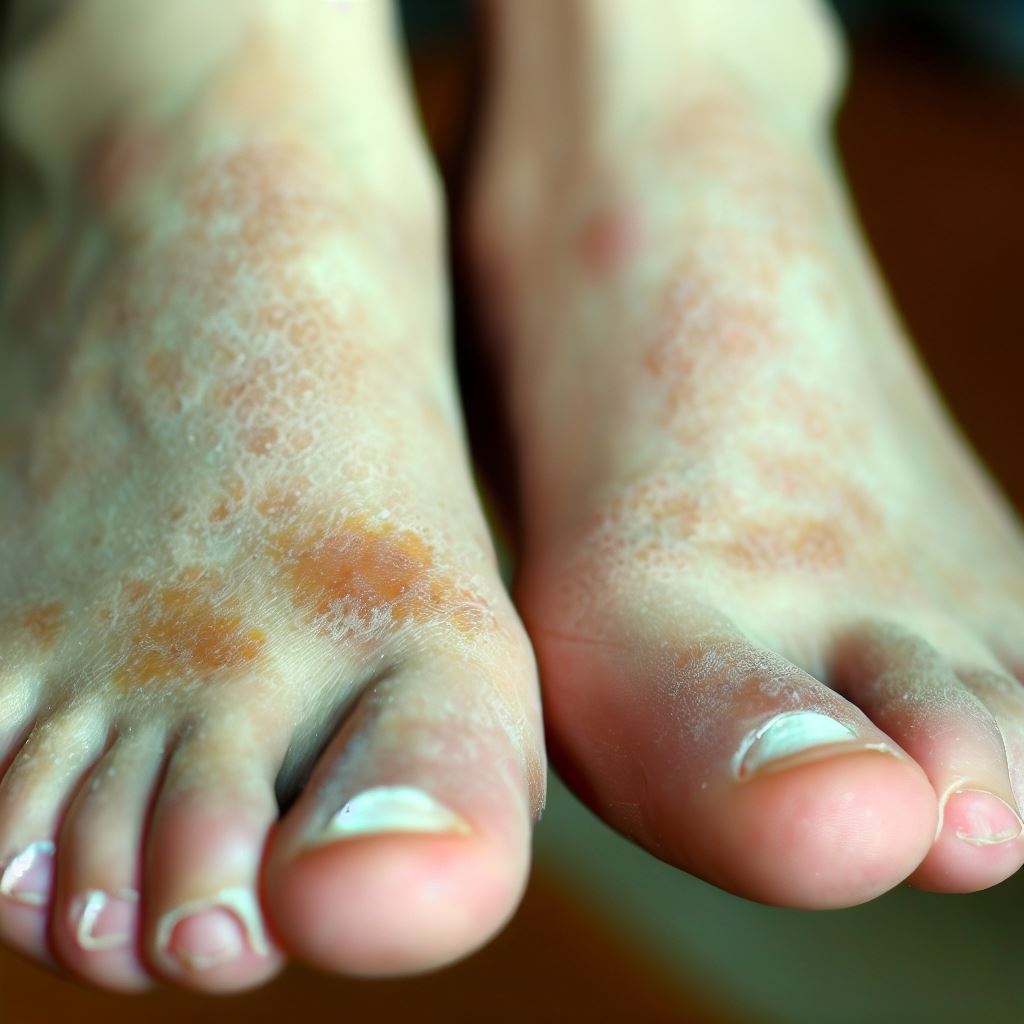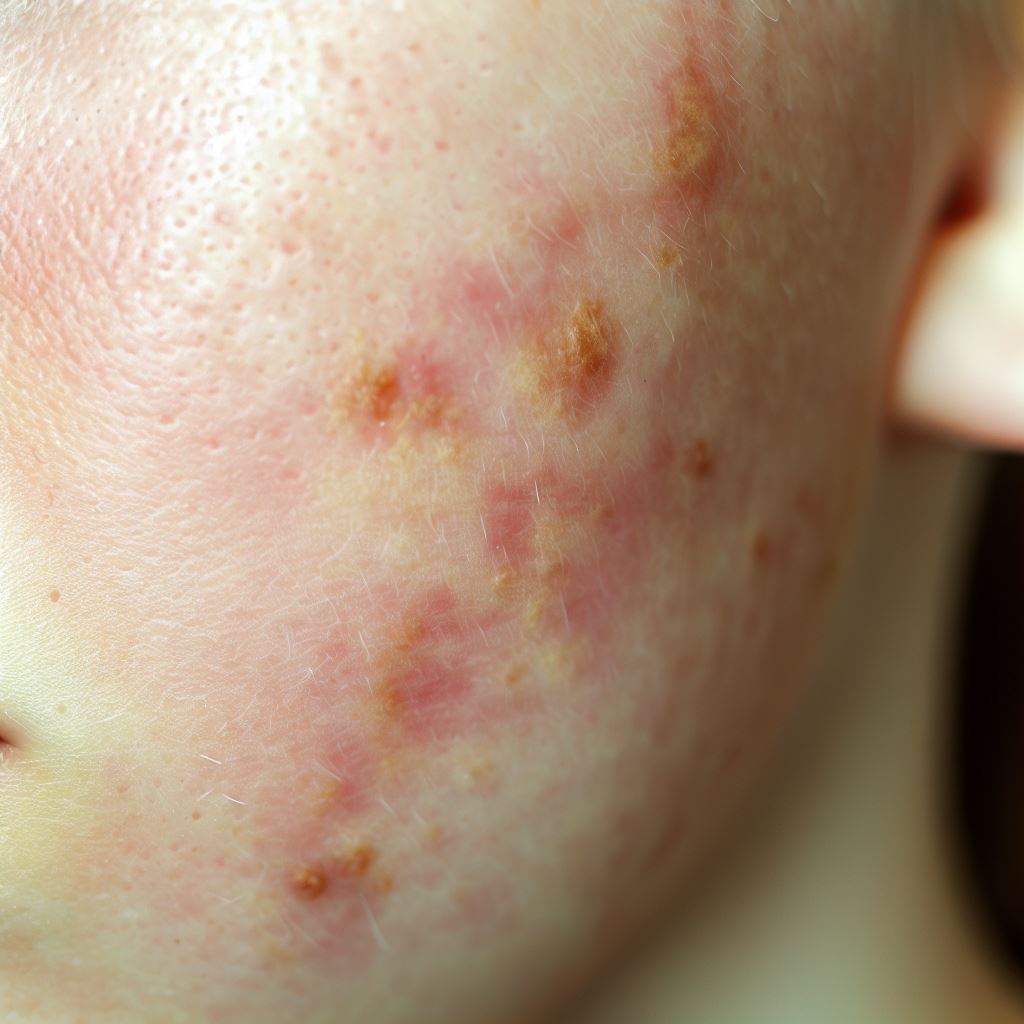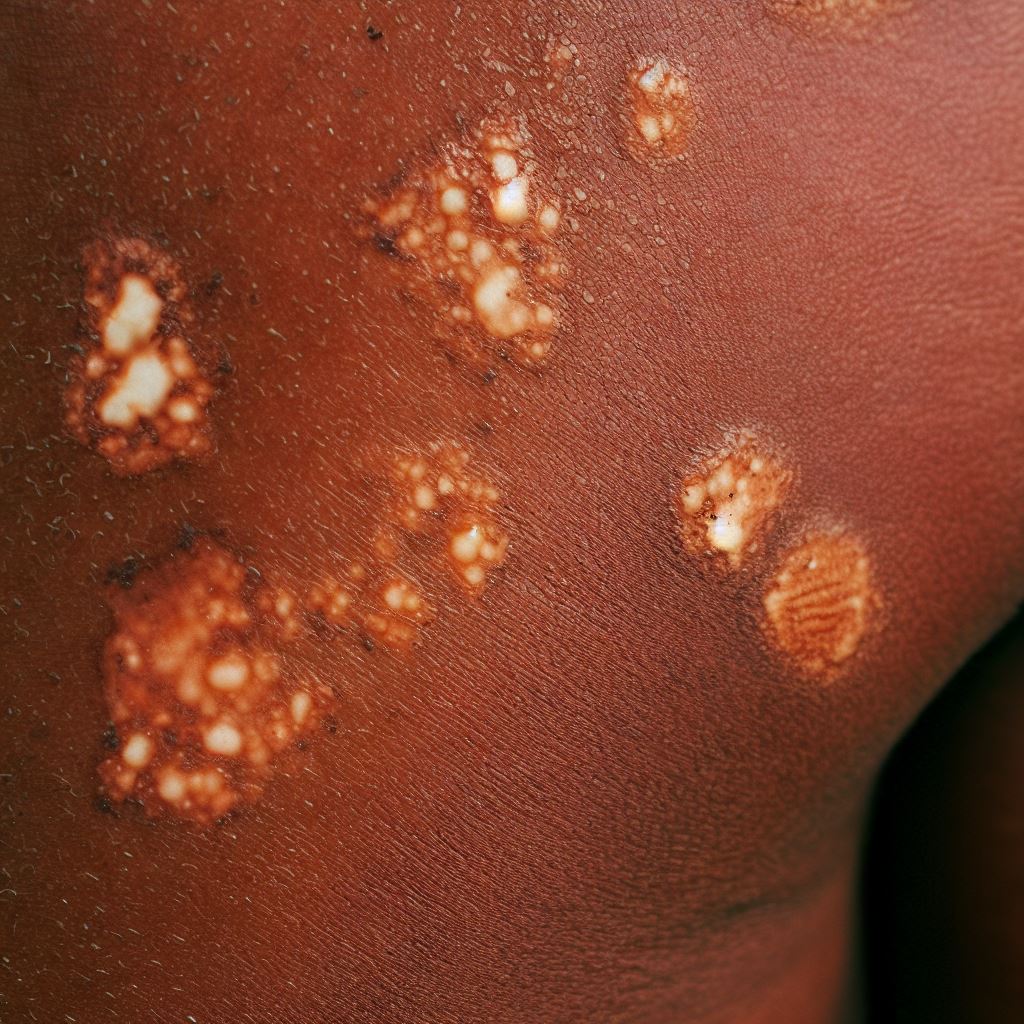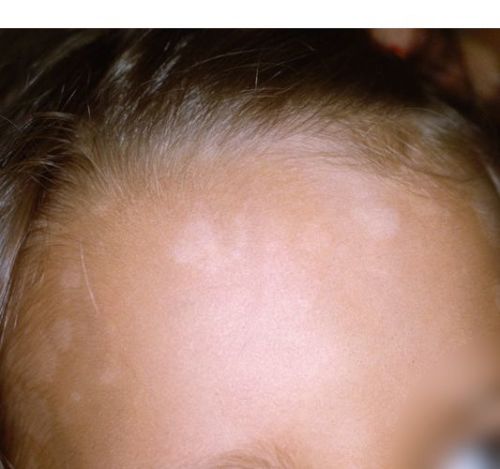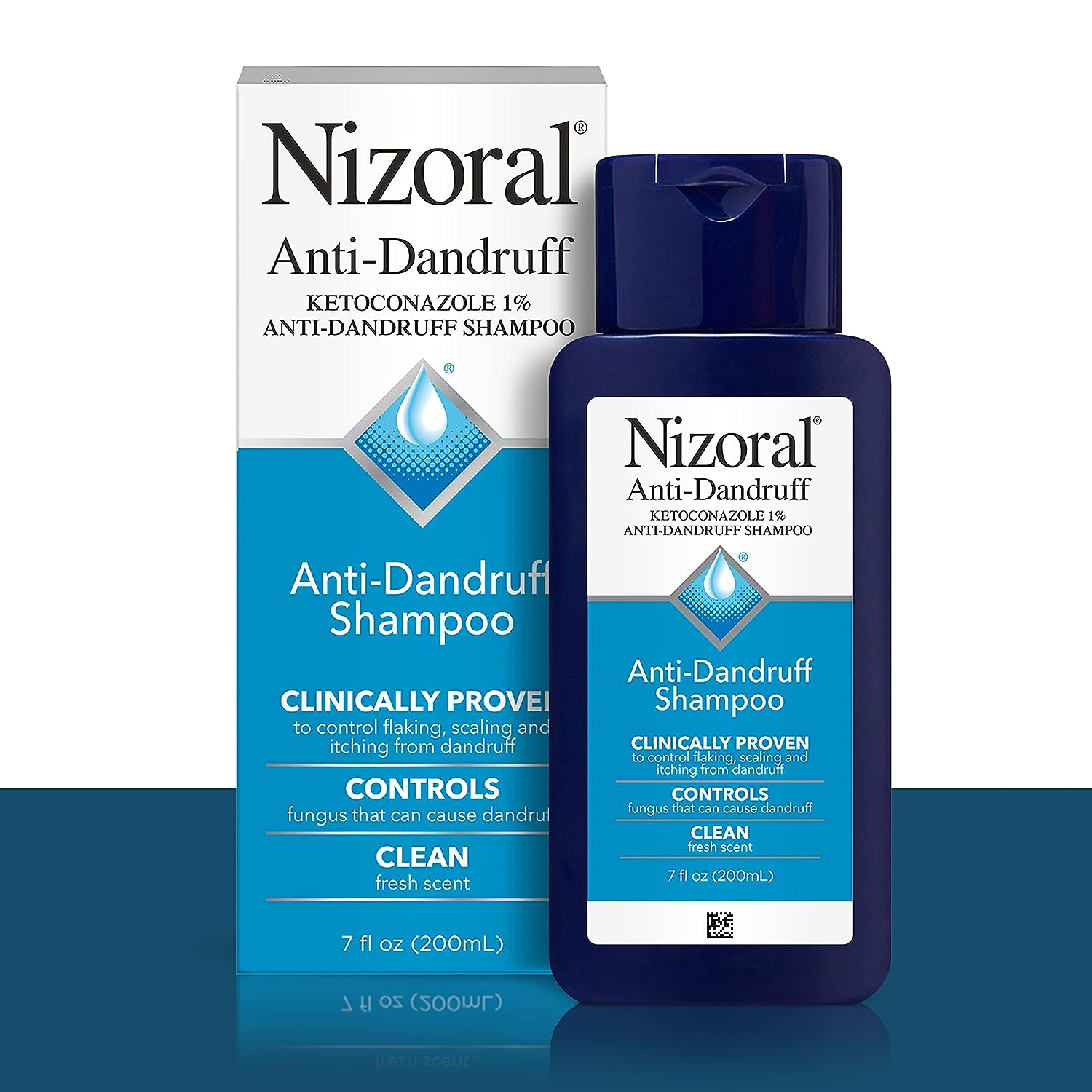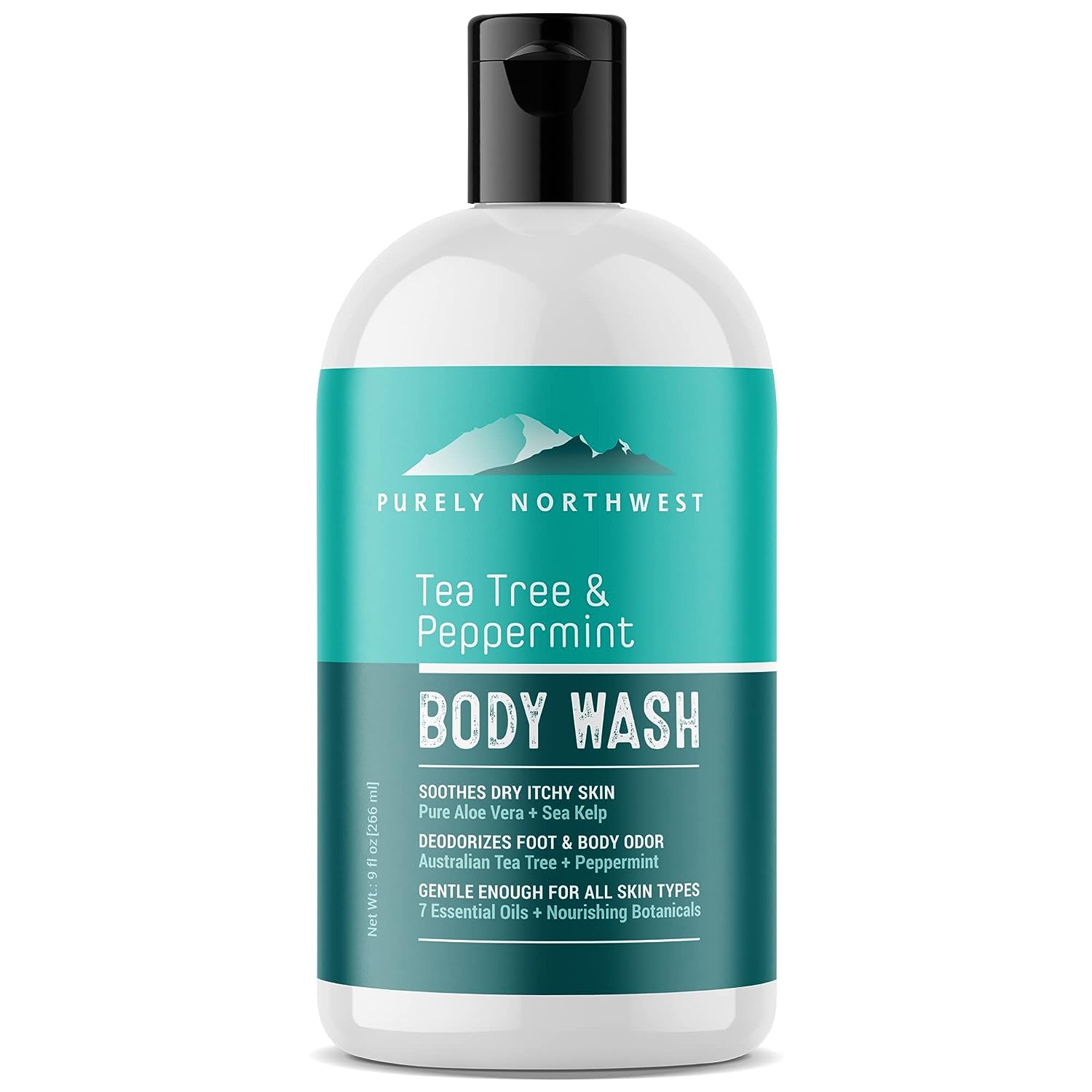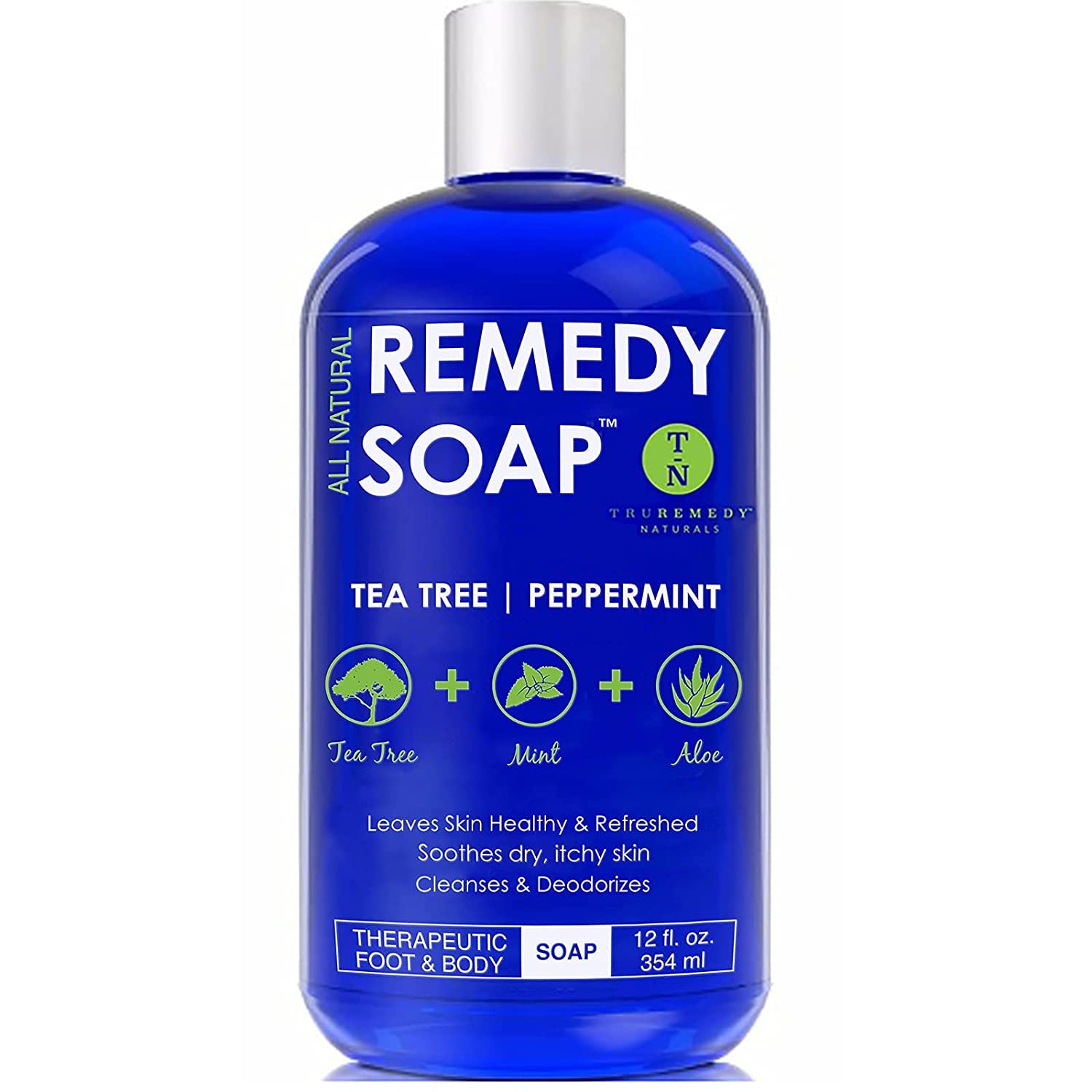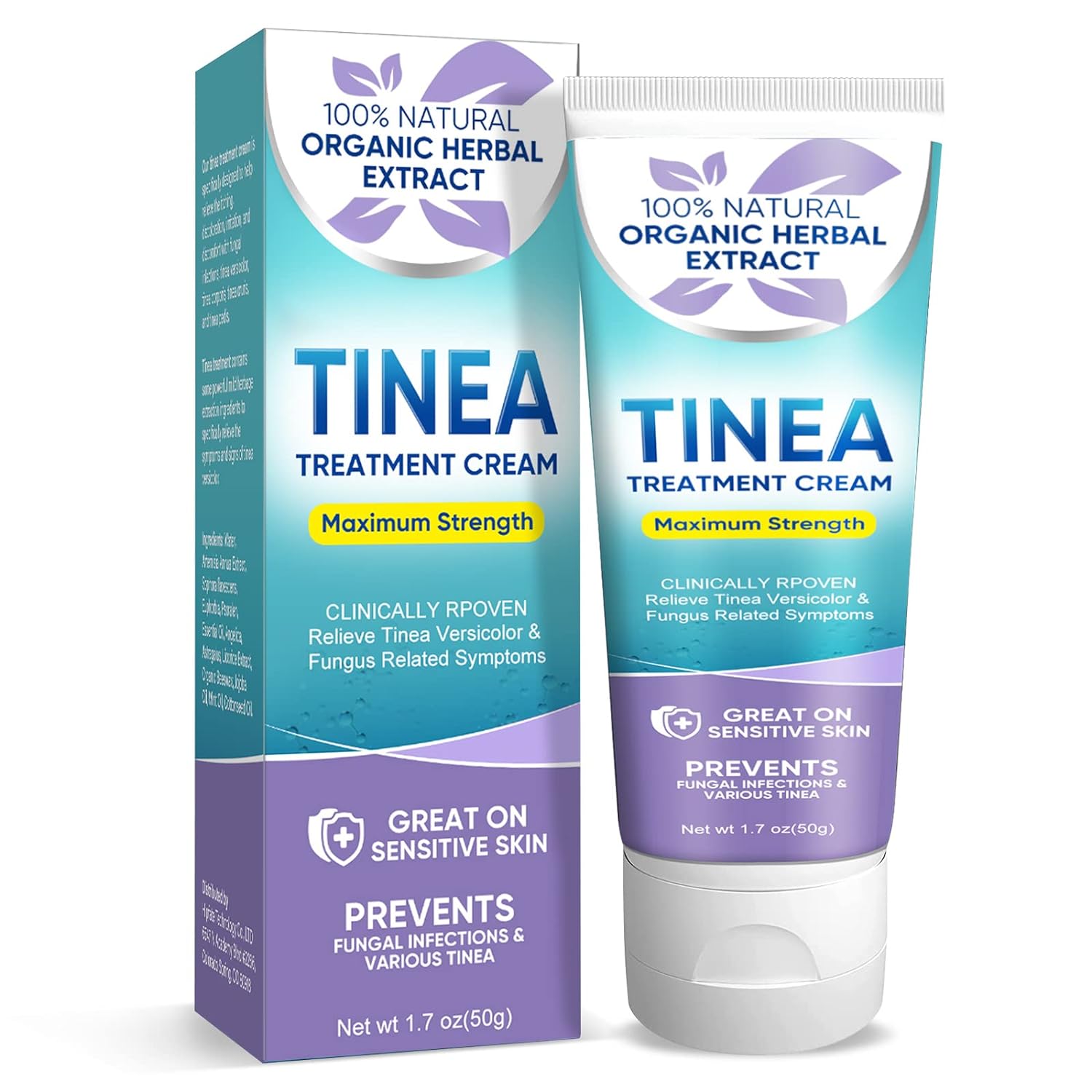What is Tinea Versicolor?
Tinea versicolor, also known as pityriasis versicolor, is a common fungal infection of the skin caused by an excess growth of Malassezia, a type of yeast that is normally found on the skin. This fungal infection is frequently seen in young adults and is more common in people living in hot and humid regions. Tinea versicolor manifests as discolored patches of skin, ranging in color from pink to tan to brown. These patches may be lighter or darker than the surrounding skin and can be more noticeable on dark skin. While tinea versicolor is not contagious or harmful, it can cause cosmetic concerns and may result in skin irritation or itching. There are various remedies for tinea versicolor available to manage this condition and restore healthy skin.
Common Symptoms
Typical signs of Tinea Versicolor.
Tinea Versicolor, also known as pityriasis versicolor, is a prevalent fungal infection that impacts the skin. Skin discoloration is one of the primary symptoms associated with this condition. The affected areas may have patches that are lighter or darker than the surrounding skin, and they can be pink, yellow, brown, tan, or white. These discolored patches often appear on the chest, back, neck, and arms.
In addition to skin discoloration, individuals with Tinea Versicolor may also experience itching. This can be particularly bothersome and may cause discomfort. Excessive sweating is another symptom that is commonly seen in affected individuals. The fungal infection interferes with the normal functioning of the skin, leading to increased sweating.
Dry, scaly patches are another common symptom of Tinea Versicolor. These patches can be flaky and may cause irritation. They can make the affected skin feel rough and appear rough as well. These dry patches can be more prominent in areas with higher oil production, such as the chest and back.
Certain factors can exacerbate the symptoms of Tinea Versicolor, including sun exposure and hot, humid weather. Sun exposure can cause the affected patches to become more visible, as they do not tan like the surrounding skin. Hot and humid weather can create an ideal environment for the fungal infection to thrive and spread.
If you are experiencing any of these symptoms, it is important to seek treatment for Tinea Versicolor. There are various treatment options available, including antifungal creams, oral medications, and topical treatments. A healthcare professional can guide you in choosing the most appropriate treatment based on the severity of your condition.
Pictures of Tinea Versicolor
Pictures of Tinea Versicolor can be helpful for identifying the condition. Affected areas may have lighter or darker patches that may have a combination of different colors, such as pink, yellow, brown, tan, or white. These patches often appear on the chest, back, neck, and arms, feet, and face. The patches are sometimes accompanied by dry, scaly patches. In some cases, excessive sweating inflames the areas.
Causes of Tinea Versicolor
Tinea Versicolor is caused by a type of yeast called Malassezia. This yeast is normally found on the skin and does not cause any issues in most people. However, certain factors can disrupt the balance of the skin’s natural flora, allowing the yeast to grow and multiply, leading to the development of Tinea Versicolor. These factors include hot and humid weather, excessive sweating, hormonal changes, a weakened immune system, oily skin, and certain medications, such as corticosteroids and immunosuppressive drugs. Additionally, genetics may play a role in predisposing individuals to this fungal infection. Understanding the underlying causes of Tinea Versicolor is important in order to implement effective treatment and prevention strategies.
Types of Yeast
Tinea versicolor is a fungal skin infection caused by different types of yeast that normally live on the skin. These yeasts are part of the normal skin flora and do not typically cause any disease. However, under certain conditions, they can multiply and lead to the development of discolored patches on the skin.
The most common type of yeast associated with tinea versicolor is Malassezia. This yeast is naturally present on the skin and usually does not cause any harm. However, when the yeast overgrows, it triggers an immune response that results in the characteristic discolored patches of tinea versicolor.
Other types of yeast that can cause tinea versicolor include Candida and Trichosporon. These yeasts also reside on the skin’s surface and may become problematic when the balance of the skin flora is disrupted.
Factors such as excessive sweating, oily skin, humid conditions, and a weakened immune system can contribute to the overgrowth of these yeasts and the development of tinea versicolor. Treatment typically involves the use of antifungal creams or lotions, as well as oral antifungal medications in severe or recurrent cases.
Understanding the types of yeast that can cause tinea versicolor is crucial for both prevention and treatment. By maintaining proper hygiene, avoiding excessive sweating, and keeping the skin clean and dry, one can help prevent the overgrowth of these yeasts and minimize the risk of developing tinea versicolor.
Factors That Increase Risk
Factors that contribute to a higher risk of developing Tinea Versicolor.
Several factors can increase the risk of developing tinea versicolor, a fungal skin infection. These factors can be environmental or biological and play a role in the overgrowth of the fungi that cause the infection.
One environmental factor that increases the risk of tinea versicolor is living in hot and humid climates. The warm and moist conditions create an optimal environment for the fungi to thrive on the skin’s surface, leading to an increased likelihood of infection.
Individuals with oily skin are also at higher risk of developing tinea versicolor. Excessive oil production on the skin can encourage the growth of the fungi responsible for the infection. The excess oil provides a nourishing environment for the fungi, allowing them to multiply and cause discolored patches on the skin.
A weakened immune system can also contribute to the development of tinea versicolor. When the immune system is compromised, it becomes less capable of effectively keeping the fungi in check, leading to their overgrowth and the subsequent skin infection.
Hormonal fluctuations can also play a role in increasing the risk of tinea versicolor. Hormonal changes, such as those that occur during puberty or pregnancy, can disrupt the balance of the skin’s natural flora. This disruption can create an environment where the fungi can thrive and cause infection.
Understanding these risk factors can help individuals take preventive measures, such as practicing good hygiene, using antifungal creams or soaps, and keeping the skin dry and well-ventilated. Consulting a dermatologist is recommended for proper diagnosis and treatment if symptoms of tinea versicolor arise.
Diagnosing Tinea Versicolor
Diagnosing tinea versicolor typically involves a combination of visual examination, medical history, and laboratory tests. A healthcare professional will first examine the affected skin areas for characteristic symptoms of tinea versicolor, such as discolored patches or spots. They will also consider the individual’s medical history and any previous instances of tinea versicolor. In some cases, a skin biopsy may be performed, where a small sample of the affected skin is taken and examined under a microscope to confirm the presence of the fungi responsible for the infection. Additionally, skin scrapings may be collected and processed to identify the type of yeast causing the infection. While dermatologists can often diagnose tinea versicolor based on visual examination alone, these laboratory tests can help confirm the diagnosis and rule out other skin conditions. Once a diagnosis is established, appropriate treatment options can be discussed to effectively manage tinea versicolor and prevent its recurrence.
Physical Examination
When diagnosing tinea versicolor, a physical examination is an important step in confirming the presence of this fungal infection. The examination process typically involves the use of a Wood lamp and microscopic examination of skin samples soaked in potassium hydroxide.
During the examination, a healthcare provider will use a Wood lamp, which emits ultraviolet light, to assess the affected areas of the skin. Tinea versicolor appears as hyperpigmented or hypopigmented, finely scaling patches or plaques on the skin. With the help of the Wood lamp, these patches or plaques may appear more prominent and distinct under the ultraviolet light.
In addition to the Wood lamp examination, a healthcare provider may also take skin samples from the affected areas for microscopic examination. These skin samples are typically soaked in potassium hydroxide, which helps in enhancing the visualization of yeast cells. Specific stains, such as methylene blue or calcofluor white, may be used to further enhance the visualization of these yeast cells under the microscope.
By conducting a thorough physical examination, healthcare providers can accurately diagnose tinea versicolor. This allows for the appropriate treatment to be administered to alleviate the symptoms and eradicate the fungal infection.
Please note that while the Wood lamp and microscopic examination are common methods for diagnosing tinea versicolor, a conclusive diagnosis may also require other diagnostic techniques, such as a skin biopsy or skin scrapings.
Overall, a physical examination plays a crucial role in diagnosing tinea versicolor by identifying the characteristic hyperpigmented or hypopigmented, finely scaling patches or plaques on the skin.
Skin Scraping and Culture Tests
Skin scraping and culture tests are commonly used diagnostic techniques to determine the presence and specific type of yeast causing a tinea versicolor infection.
During a skin scraping test, a healthcare provider will gently scrape off a small sample of skin from the affected area using a scalpel or a blunt instrument. The sample is then collected in a sterile container and sent to a laboratory for further analysis.
In the laboratory, the skin sample is placed on a culture medium, such as a petri dish containing a nutrient-rich agar. This allows the yeast cells present in the sample to multiply and grow.
Over a period of several days, the culture is observed for the growth of specific types of yeast associated with tinea versicolor. By identifying the specific type of yeast through the culture test, healthcare providers can determine the most effective treatment strategy.
The significance of the skin scraping and culture test lies in its ability to provide valuable information about the nature of the tinea versicolor infection. This information helps healthcare providers select the appropriate antifungal medication or topical treatment to target the specific type of yeast causing the infection.
In conclusion, skin scraping and culture tests are important diagnostic techniques that allow for the identification of the specific type of yeast causing a tinea versicolor infection. This information is crucial in determining the most effective treatment approach for managing the condition.
Wood’s Lamp Test
The Wood’s Lamp Test is a common diagnostic procedure used to identify tinea versicolor, a fungal skin infection. This test involves the use of an ultraviolet black light to observe the characteristic coppery-orange fluorescence produced by pityriasis versicolor.
During the test, a healthcare provider will examine the affected skin under the Wood’s lamp in a dark room. The ultraviolet light emitted by the lamp causes the fungus responsible for tinea versicolor to display a distinctive fluorescence.
The steps involved in the Wood’s Lamp Test include carefully examining the skin under the ultraviolet light for any discolored patches or lesions. If there is tinea versicolor present, the affected areas will appear bright yellow-green or golden yellow under the Wood’s lamp.
The coppery-orange fluorescence observed during the test is a result of the interaction between the ultraviolet light and specific molecules produced by the yeast that causes tinea versicolor.
The Wood’s Lamp Test is a quick and non-invasive method to diagnose tinea versicolor. By utilizing this test, healthcare providers can accurately identify the infection and choose the appropriate treatment options to address the specific type of yeast causing the condition.
Treatments for Tinea Versicolor
Tinea versicolor is a fungal infection that affects the skin and causes discolored patches. It is not harmful or contagious. Treatments for tinea versicolor include topical and oral medications, as well as natural remedies. This article will discuss effective treatments for tinea versicolor and provide an overview of available options to restore skin color and health. Treatment options for tinea versicolor include antifungal creams, oral medications, and natural remedies that can effectively address your needs and provide relief from this common skin condition.
Over-the-Counter Solutions
Over-the-Counter Remedies for Tinea Versicolor
If you’re experiencing discolored patches of skin and suspect a fungal infection like tinea versicolor, there are over-the-counter solutions available to help alleviate the symptoms and target the underlying cause. These topical treatments are effective in treating tinea versicolor and can be easily obtained without a prescription.
One widely used option is antifungal cream. These creams contain active ingredients that combat the type of yeast responsible for tinea versicolor. Applying the cream directly to the affected areas helps to eliminate the fungus and restore a healthy skin color.
Another effective over-the-counter solution is dandruff shampoo. Many dandruff shampoos contain antifungal ingredients like zinc pyrithione, which can help treat the fungal infection. Using the shampoo as a body wash in the affected areas can help address the tinea versicolor infection.
Furthermore, using zinc pyrithione soap can also be beneficial in treating tinea versicolor. This soap can help eliminate the yeast responsible for the infection and promote healthy skin.
These over-the-counter topical treatments are convenient options for individuals seeking immediate relief from tinea versicolor symptoms. However, if home remedies for tinea versicolor don’t provide significant improvement or if the condition persists, it’s important to consult a healthcare professional for further evaluation and treatment.
Tinea Versicolor treatments available on Amazon
- Nizoral Anti-Dandruff Shampoo – This shampoo contains ketoconazole, an antifungal medication that can help treat Tinea Versicolor. It also helps to relieve itching and flaking associated with dandruff. Reviewers say it works well for Tinea Versicolor and leaves their hair feeling clean and soft. Link: https://www.amazon.com/dp/B00AINMFAC/
- T-V-T-Tinea-Versicolor-Treatment – Tinea Versicolor Treatment and Cure is a topical antifungal medication designed to treat Tinea Versicolor. It comes in an 8-ounce can and is formulated with a blend of natural ingredients that work together to eliminate the yeast overgrowth that causes Tinea Versicolor. The product is easy to apply and can be used on the chest, back, arms, and other affected areas of the skin.
Link: https://www.amazon.com/s?k=T-V-T-Tinea-Versicolor-Treatment&crid=WKP9OL5GEL0Y&sprefix=t-v-t-tinea-versicolor-treatment,aps,611&ref=nbsbnoss
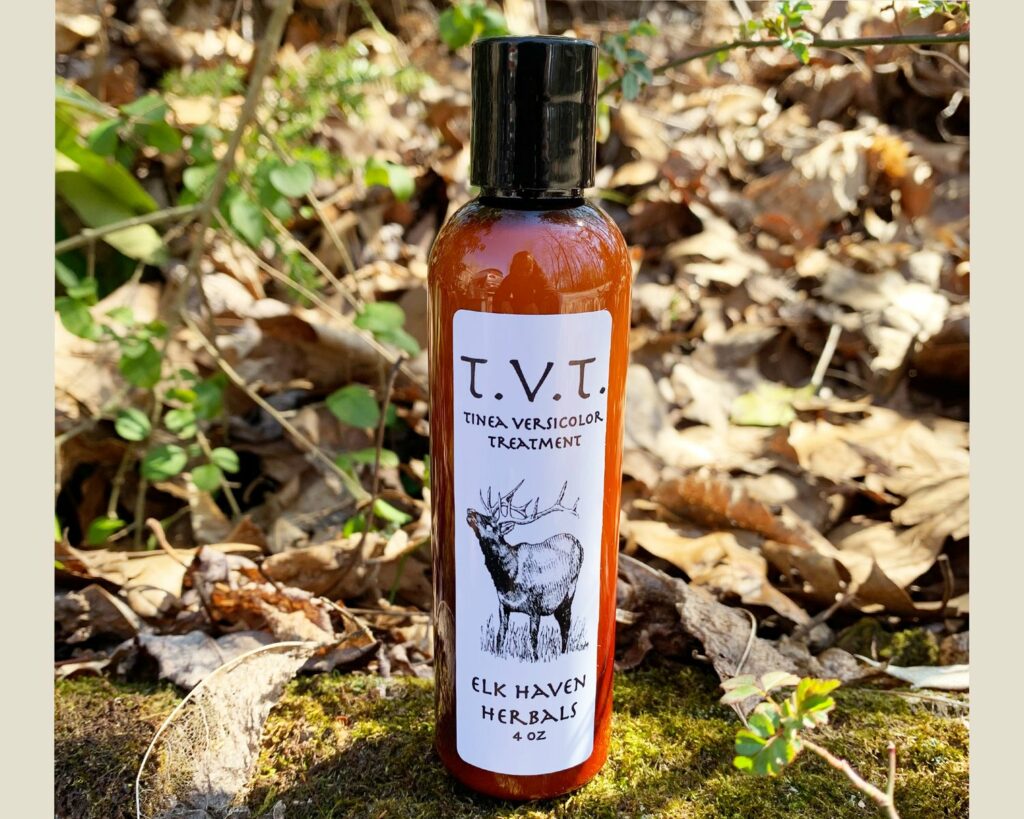
- Purely Northwest Antifungal Tea Tree Oil Foot & Body Wash – This body wash contains tea tree oil, peppermint oil, and oregano oil to help fight fungal infections. Reviewers say it works well for Tinea Versicolor and has a refreshing scent. Link: https://www.amazon.com/dp/B00HNWNXAW/
- Remedy Soap Tea Tree Oil Body Wash – This body wash contains tea tree oil, mint oil, and aloe vera to help soothe and heal fungal infections. Reviewers say it works well for Tinea Versicolor and leaves their skin feeling soft and refreshed. Link:https://www.amazon.com/dp/B00R1P82UW/
- Tinea Versicolor Treatment – This cream contains tolnaftate, an antifungal medication that can help treat Tinea Versicolor. Reviewers say it works well and clears up the infection quickly. Link: https://www.amazon.com/dp/B00OI5TJ3I/
Please note that while these products may be effective remedies for tinea versicolor, it is always best to consult with a healthcare professional for proper diagnosis and treatment.
In conclusion, if you’re dealing with tinea versicolor, over-the-counter options like antifungal creams, dandruff shampoos, and zinc pyrithione soaps can provide effective relief and help clear the fungal infection. Remember to always read and follow the instructions carefully and consult a healthcare professional for guidance if needed.
Natural Remedies for Tinea Versicolor
In addition to over-the-counter treatments, there are a variety of natural remedies for tinea versicolor. These home remedies can be used to reduce symptoms and restore the skin’s color.
One such remedy is apple cider vinegar. Applying this remedy topically to the affected area multiple times a day can help reduce the amount of yeast on the skin and combat the fungal infection.
Another natural remedy for tinea versicolor is tea tree oil. This essential oil has antifungal properties that help reduce the symptoms of tinea versicolor and restore a healthy skin tone. Tea tree oil can be applied directly to the affected area several times a day until the discoloration subsides.
Finally, diet and lifestyle modifications can also help treat tinea versicolor. Keeping the skin clean and dry is essential for preventing fungal growth on the skin. Avoiding tight-fitting clothing and using natural fibers whenever possible can help reduce the risk of infection. Eating a balanced diet that includes healthy fats, proteins, and fiber can also boost the body’s natural defense against fungal infections .
FAQ
Q: What is Tinea Versicolor?
Tinea versicolor, also known as pityriasis versicolor, is a prevalent fungal infection that affects the skin. It is not considered harmful or contagious, but it can result in patches of discolored skin.
Q: How do you diagnose Tinea Versicolor?
A: The Wood’s Lamp Test is a quick and non-invasive method to diagnose tinea versicolor. By utilizing this test, healthcare providers can accurately identify the infection and choose the appropriate treatment options to address the specific type of yeast causing the condition.
Q: What are some Remedies for Tinea Versicolor?
A: The most common treatments for tinea versicolor are antifungal creams, dandruff shampoos, and zinc pyrithione soaps. Additionally, ultraviolet light therapy and antifungal medications may be prescribed by a healthcare provider to treat the condition.

